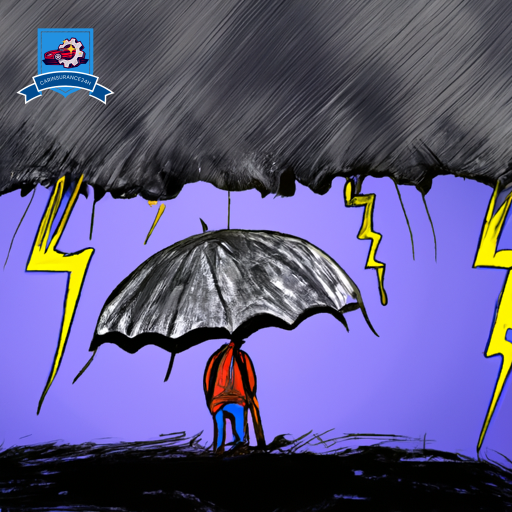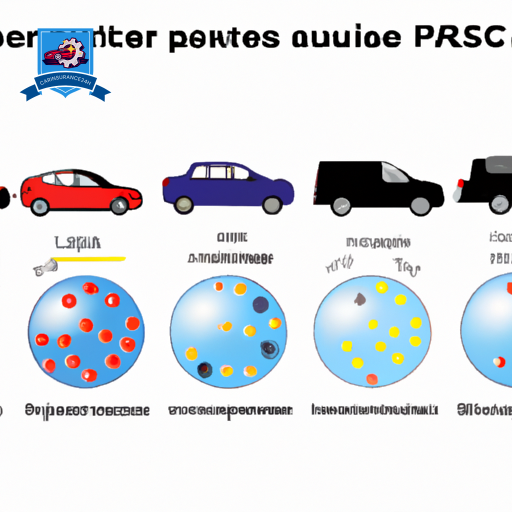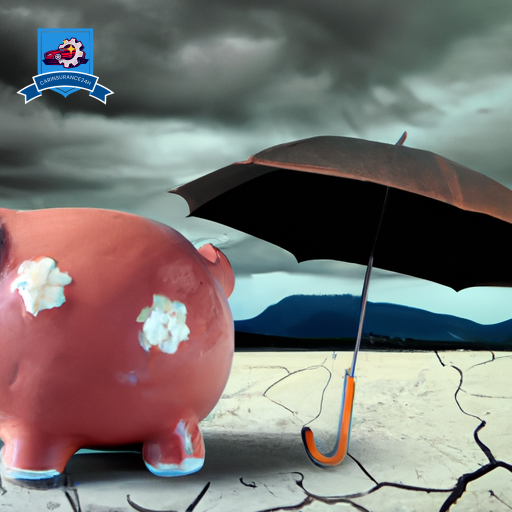Exploring the complexities of insurance policy limits reveals a critical aspect of risk management that individuals and entities must consider meticulously. When policy limits fall short of covering the damages or liabilities incurred, the financial and legal ramifications can extend far beyond the immediate costs, potentially exposing the policyholder to significant personal liability and adversely affecting their future insurability.
This scenario underscores the importance of understanding the depth of one’s coverage and the mechanisms available, such as umbrella coverage or increasing limits, to mitigate such risks. The ensuing discussion aims to explore these avenues, offering insights into how one can safeguard against the unforeseen, maintaining financial and legal security.
Understanding Policy Limits

Policy limits, a fundamental aspect of insurance policies, designate the maximum amount an insurer is obligated to pay in the event of a covered loss. Understanding these limits is important for policyholders to guarantee adequate protection against potential financial losses. These limits vary greatly depending on the coverage types and the insurer’s policy offerings. For instance, liability coverage will have different policy limits compared to property damage coverage within the same insurance policy. It’s essential for individuals and businesses to carefully assess their risk exposure and select policy limits that reflect their specific needs.
Additionally, policy exclusions play a pivotal role in determining the actual coverage scope. Exclusions are specific conditions or circumstances under which the insurance policy will not provide coverage. Common exclusions might include intentional damage, normal wear and tear, or damages resulting from war. Understanding these exclusions is as important as comprehending the coverage types, as they directly impact the effectiveness of the policy limits. Policyholders should meticulously review their insurance contracts to identify any exclusions that could potentially leave them exposed to uncovered losses.
Financial Impacts

Upon encountering situations where policy limits are insufficient, individuals and businesses are likely to face significant financial repercussions. These effects include increased out-of-pocket costs, as claimants must cover the gap between policy limits and actual expenses.
Additionally, there are heightened concerns regarding legal liability, where the insufficient coverage may not fully protect against claims, leading to further financial strain.
Increased Out-of-Pocket Costs
When policy limits are insufficient, individuals often face important increases in out-of-pocket costs to cover the remaining balance of any claims. This financial strain can manifest in various forms, greatly impacting one’s financial health and stability. The consequences of exceeding policy limits extend beyond the immediate costs, affecting an individual’s financial planning and security.
- Unplanned Borrowing: Taking loans to cover expenses, leading to debt.
- Emergency Savings Depletion: Using saved funds, risking future financial security.
- Higher Premiums: Potential increase in future insurance premiums.
- Payment Plans: Arranging with providers to pay over time, possibly incurring interest.
- Asset Liquidation: Selling personal assets to cover costs.
These increased out-of-pocket costs underscore the importance of adequately evaluating coverage needs to avoid such financial burdens.
Legal Liability Concerns
Exceeding insurance policy limits can lead to significant legal liability concerns, with profound financial impacts for individuals. When damages awarded in a lawsuit surpass the policy’s coverage, the insured party may be personally responsible for the difference. This scenario often arises from negligence determination, where the party’s actions are found to have caused harm. As a result, the financial burden can extend well beyond the policy’s limits, affecting personal assets and future earnings.
Settlement negotiations become vital in these instances, offering a possible avenue to mitigate financial exposure. However, if an agreement cannot be reached, the insured may face garnishment of wages, liquidation of assets, or other legal remedies sought by the plaintiff to recover the owed amount. This emphasizes the importance of adequate insurance coverage and proactive risk management strategies.
Legal Ramifications

Moving beyond the financial impacts, the legal ramifications of insufficient policy limits warrant close examination. When liability exceeds coverage, individuals face the peril of personal asset risk, potentially leading to significant legal challenges.
This segment explores the consequences and mitigation strategies for those maneuvering these complex legal waters.
Liability Exceeding Coverage
In cases where an individual’s responsibility surpasses their insurance coverage, the legal consequences can greatly impact both the responsible party and the claimant. This scenario often leads to complex legal disputes, especially when coverage exceptions or claim denial come into play. The primary ramifications include:
- Court judgments exceeding policy limits
- Financial strain on the responsible party due to out-of-pocket expenses
- Potential bankruptcy for individuals unable to cover the excess liability
- Negotiations for a reduced claim settlement
- Increased insurance premiums or policy non-renewal for the responsible party
Understanding these potential outcomes underscores the importance of adequately evaluating one’s insurance needs to mitigate risks associated with liability exceeding coverage limits.
Personal Asset Risk
Building on the understanding of liabilities that surpass insurance coverage, it becomes imperative to explore the legal ramifications associated with personal asset risk.
When an individual’s policy limits are insufficient to cover damages or liabilities, personal assets become vulnerable to legal claims. This scenario underscores the importance of thorough asset protection strategies.
A meticulous risk assessment can identify potential exposure and guide the implementation of safeguards, such as umbrella insurance policies or the establishment of legal structures designed to shield assets. These steps are critical in mitigating personal financial risk and ensuring that one’s assets remain protected against claims that exceed insurance policy limits.
Personal Liability Risks

Understanding personal liability risks is essential for individuals to effectively manage potential financial exposures arising from everyday activities. Personal liability risks involve situations where individuals are held legally responsible for damage or injuries caused to others or their property. A thorough risk assessment is pivotal in identifying the scope of potential liabilities one may face, while understanding claim frequency can help in preparing for the likelihood of such events occurring.
Liability risks can stem from a wide array of activities and circumstances, often leading to financial consequences that exceed the limits of standard insurance policies. It is important to recognize the common areas of exposure:
- Homeownership: Accidents occurring on your property that injure visitors can lead to significant liability claims.
- Automobile accidents: Being at fault in a car accident can result in liabilities far exceeding typical coverage limits.
- Pet ownership: Incidents involving your pets causing injury or damage to others.
- Recreational activities: Liability arising from injuries or damages caused during recreational activities, like sports.
- Social gatherings: Hosting events where an attendee sustains injuries could implicate the host legally and financially.
Managing these risks effectively involves not only conducting a thorough assessment of one’s lifestyle and potential areas of liability but also ensuring that insurance coverage is adequate to protect against these exposures. In cases where standard policy limits may not provide sufficient coverage, considering umbrella insurance policies becomes essential. These policies offer an additional layer of protection, covering liabilities beyond the limits of primary insurance policies, thereby safeguarding individuals from severe financial distress and potential asset loss due to personal liability claims.
Affect on Future Insurance

Experiencing a claim that exceeds policy limits can greatly impact an individual’s future insurance options. This can result in higher premiums or changes in coverage availability as insurers evaluate the risk profile. A history of claims, especially those surpassing policy limits, can signal higher risk to insurers. This assessment can lead to more stringent underwriting criteria or even refusal of coverage by some insurers who perceive the individual as too high a risk.
Moreover, the aftermath of a claim exceeding policy limits may also affect an individual’s credit score. Insurers often use credit scores as one factor in determining premiums, with a lower score potentially leading to higher premiums. In the event that an individual is unable to fully pay for damages or settlements that exceed their policy limits, this financial strain can negatively impact their credit score. Consequently, the increased premiums are not merely a direct result of the claim itself but are also influenced by the deterioration in credit health.
Insurance discounts, often awarded for claims-free periods, may no longer be accessible. Loss of these discounts further exacerbates the financial burden on the policyholder by increasing out-of-pocket costs for insurance premiums. To sum up, a claim that surpasses policy limits has a domino effect, influencing immediate financial stability due to potential out-of-pocket expenses and affecting future insurability and costs. This underscores the importance of adequately evaluating one’s coverage needs to mitigate such risks.
Exploring Umbrella Coverage

How does umbrella coverage serve as a safeguard against the financial repercussions of claims that exceed standard policy limits?
In the domain of insurance, where unforeseen events can lead to substantial financial claims, umbrella coverage acts as an essential safety net. It is designed to kick in when the limits of your standard liability policies (such as auto, homeowners, or renters insurance) are reached, providing an additional layer of protection. This coverage is akin to a rainy day fund, offering peace of mind and financial security in the face of large claims or lawsuits that could otherwise devastate one’s financial stability.
The benefits of umbrella coverage include:
- Extended Coverage Limits: It significantly boosts the liability coverage beyond what is provided by your standard policies, covering claims that exceed these limits.
- Protection Against a Wide Range of Liabilities: Umbrella coverage is thorough, protecting against a variety of claims including bodily injury, property damage, and certain lawsuits.
- Coverage for Defense Costs: It often covers legal fees and defense costs, which can accumulate quickly, even if you are not found liable.
- Filling Coverage Gaps: Umbrella insurance can fill in coverage gaps left by your primary policies, ensuring a broader spectrum of incidents are covered.
- Peace of Mind: Knowing you have a safety net for large claims provides financial security and peace of mind.
In essence, umbrella coverage is designed to protect individuals from the potentially ruinous expenses associated with claims that surpass their primary insurance policies’ limits, effectively bridging coverage gaps and acting as a pivotal component of a thorough risk management strategy.
Increasing Your Limits

Recognizing the potential for claims to exceed existing policy limits, individuals may find it prudent to explore options for increasing their coverage thresholds. This approach not only enhances financial security but also guarantees a wider safety net in the face of unforeseen circumstances. Enhancing policy limits can be navigated through a structured evaluation of current and potential future needs, aligned with an evaluation of available coverage options and discount qualifications.
| Strategy | Description | Considerations |
|---|---|---|
| Review Current Policy | Evaluate existing coverage to identify gaps and underinsured areas. | May require professional evaluation. |
| Compare Coverage Options | Explore different policies and endorsements that offer higher limits. | Balance between cost and coverage. |
| Negotiate with Insurers | Discuss with current insurer about increasing limits. | Leverage loyalty or multi-policy discounts. |
| Discount Qualifications | Identify and qualify for discounts to offset higher premium costs. | Bundling, safety features, loyalty. |
| Regularly Update Coverage | Periodically reassess coverage needs and adjust limits accordingly. | Keeps pace with inflation and lifestyle changes. |
Increasing policy limits is a proactive step towards safeguarding one’s assets and financial well-being. By thoroughly evaluating one’s coverage needs, comparing available coverage options, negotiating with insurers, and taking advantage of discount qualifications, policyholders can effectively enhance their protection. Moreover, regularly updating coverage ensures that policy limits remain in line with current values and needs, providing an ongoing safety net. This logical and structured approach to increasing insurance coverage limits underscores the importance of being adequately prepared for the unpredictable, thereby minimizing potential financial strain.
Preventative Strategies

In addition to increasing policy limits, adopting preventative strategies can greatly mitigate the risk of claims surpassing existing coverage thresholds. Implementing a thorough approach towards risk management involves not only a periodic coverage review but also a thorough risk assessment to identify potential vulnerabilities. By understanding where the risks lie, individuals and businesses can take proactive steps to reduce the likelihood of a claim that exceeds policy limits.
The following are key preventative strategies:
- Conduct Regular Risk Assessments: Regularly evaluate potential risks to stay ahead of possible scenarios that could result in claims.
- Engage in Continuous Coverage Review: Make sure that your coverage evolves in tandem with your changing risk profile, addressing any gaps or underinsured areas.
- Implement Safety Measures and Protocols: Depending on the nature of the risk, implement appropriate safety measures to prevent accidents or mitigate damage.
- Educate and Train: For businesses, regular training of employees on safety practices and compliance can greatly reduce the risk of incidents that could lead to large claims.
- Stay Informed About Legal Changes: Legal and regulatory changes can affect liability and risk exposure. Staying informed helps in adjusting practices to remain compliant and reduce risk.
These strategies serve as a foundation for a robust risk management plan. By emphasizing the importance of both risk assessment and coverage review, individuals and organizations can substantially reduce the chances of encountering a situation where their policy limits are insufficient. This proactive approach not only safeguards assets but also guarantees peace of mind in the face of potential risks.
Seeking Professional Advice

While implementing preventative strategies is a foundational step in managing risks, seeking professional advice can further enhance your understanding and management of potential exposures. This approach involves engaging in a thorough insurance consultation to scrutinize existing policies, identify coverage gaps, and recommend appropriate adjustments. Professionals specializing in insurance consultation bring a wealth of knowledge and experience, enabling policyholders to make informed decisions about their coverage needs.
The importance of professional indemnity in this situation cannot be overstated. Experts in the field can provide insights into complex scenarios where standard policy limits might fall short, offering strategies to mitigate these risks. They also assist in evaluating the adequacy of professional indemnity coverage, which protects individuals and businesses against claims made by clients for loss or damage due to provided services or advice.
Engaging with a professional advisor ensures that policyholders are not only aware of potential financial risks but also equipped with the tools and strategies to address them effectively. This proactive approach facilitates a deeper comprehension of how policy limits interact with real-world scenarios, leading to more robust protection against unforeseen events.
Frequently Asked Questions
How Can I Negotiate With My Insurance Company for Better Terms After an Accident Has Exposed My Policy Limits as Insufficient?
To negotiate better terms with your insurance company, consider discussing policy enhancements and exploring additional coverage options. Present a logical argument emphasizing the necessity for increased protection to adequately address potential future incidents.
Are There Specific Types of Assets That Are More Vulnerable to Being Seized in the Event That My Policy Limits Do Not Cover All Damages?
When evaluating asset vulnerability, it’s essential to bear in mind that real estate investments, due to their substantial value and liquidity, often face higher risks. Effective asset protection strategies are vital to mitigate these investment risks.
How Does the Process of Filing for Bankruptcy Work if I’m Unable to Cover the Excess Damages Out-Of-Pocket, and How Will This Affect My Long-Term Financial Health?
Filing for bankruptcy to manage excess damages involves a legal process that can impact long-term financial health. Alternatives, such as credit counseling, may offer less detrimental solutions, preserving credit scores and future borrowing capabilities.
Can the Victim(S) Refuse a Settlement if They Deem the Policy Limits Insufficient and Directly Pursue Personal Assets Instead?
Traversing the treacherous waters of settlement negotiations, victims can indeed decline a settlement if it falls short, opting to directly pursue personal assets. This approach may compel the defendant to marshal legal defenses vigorously.
In What Ways Can My Employment Be Affected if I’m Found Personally Liable for Damages That Exceed My Policy Limits?
If found personally liable for damages exceeding policy limits, job search difficulties may arise, and professional reputation could be greatly impacted. These consequences underscore the importance of adequate coverage and risk management strategies in safeguarding one’s career.










